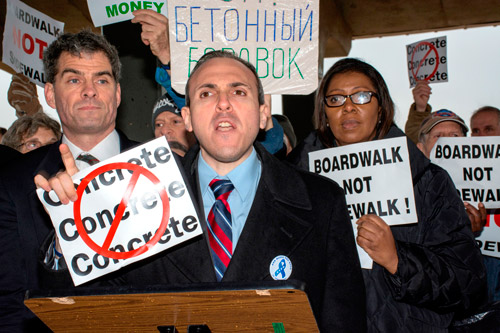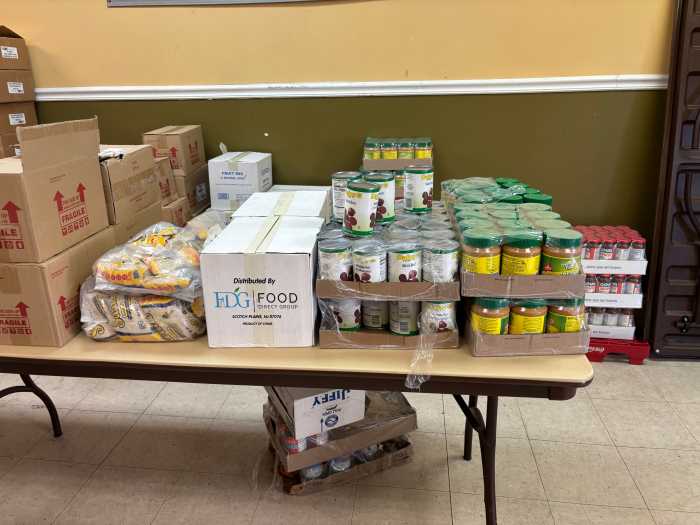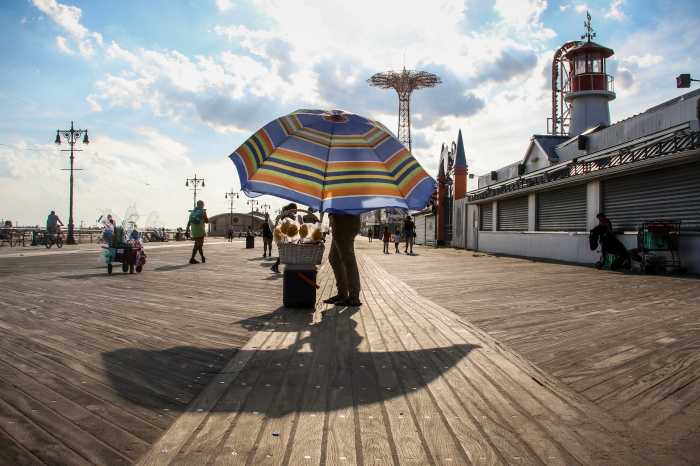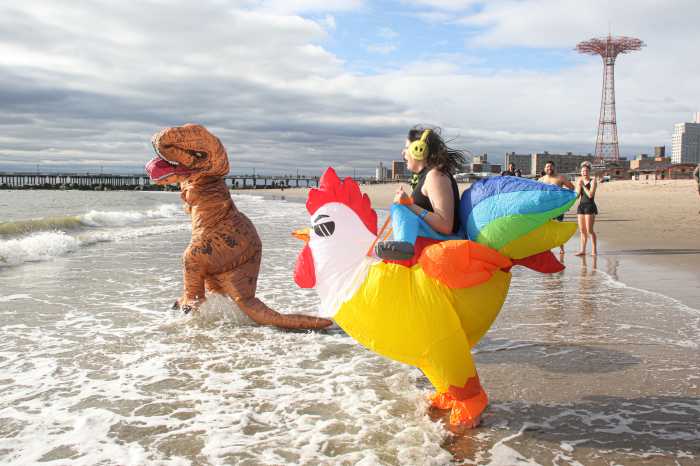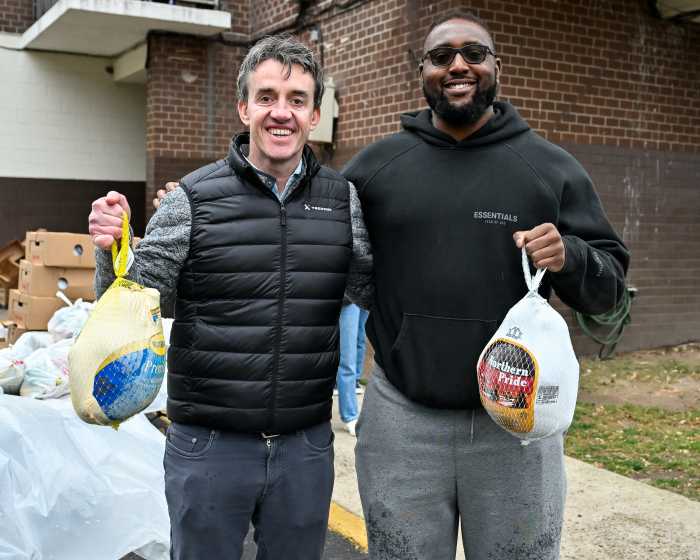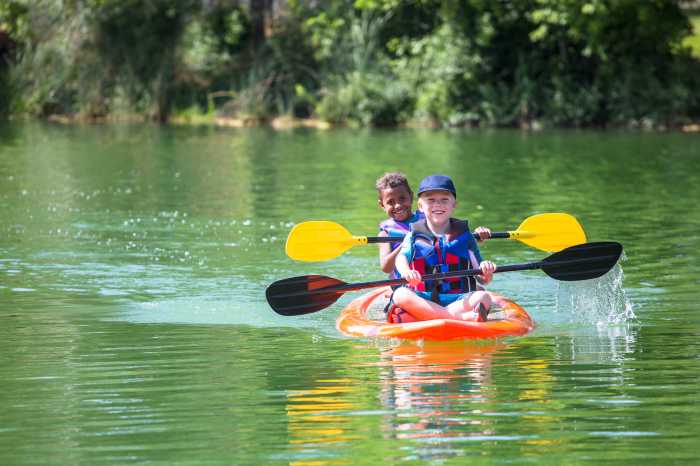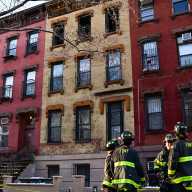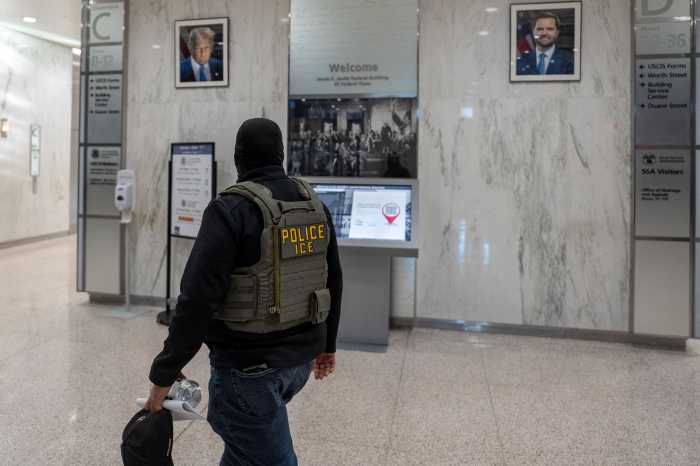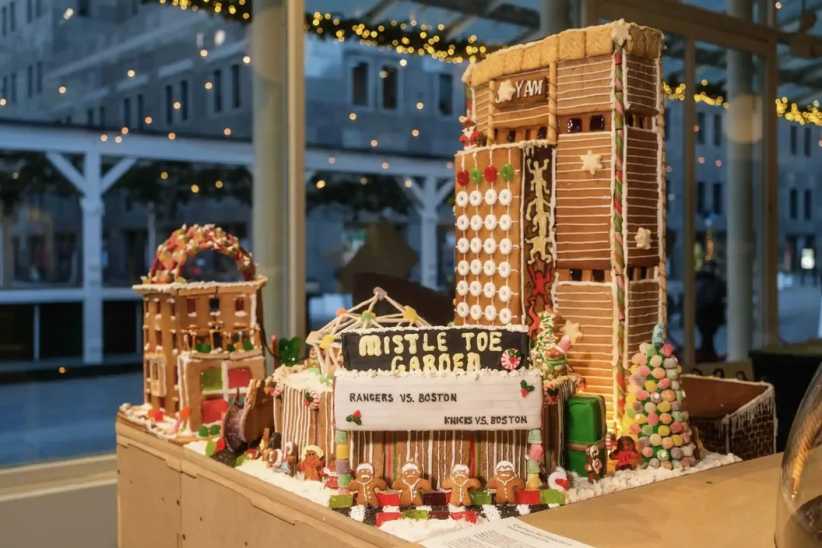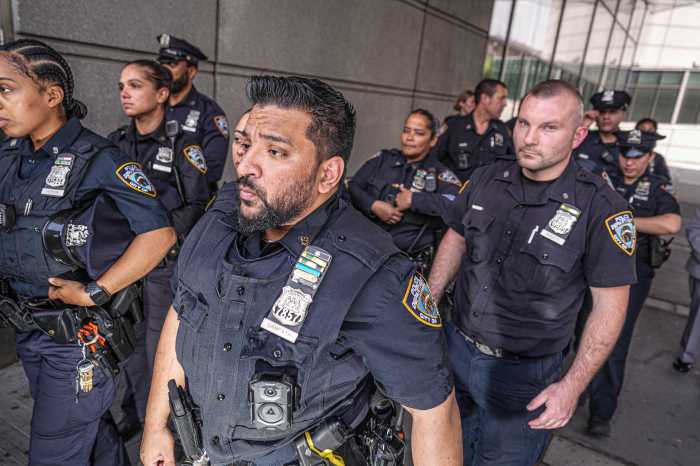Perhaps the future of the Riegelmann Boardwalk isn’t set in concrete.
More than 100 locals and half a dozen elected officials turned out to demand that the city abandon its plan to convert the iconic wooden walkway into a cement pathway at an outdoor rally last Sunday.
One local elected official, who is trying to keep the boards in the Boardwalk by designating it a scenic landmark, said the Parks Department’s destruction of the Boardwalk is just another example of the city’s history of neglect of Brighton Beach and Coney Island.
“This is an issue that runs far deeper than just wood versus concrete — this is an issue of disrespect to this Southern Brooklyn icon for too long,” said Councilman Mark Treyger (D–Coney Island), who also criticized the Park Department’s rationale of using concrete because it would be cheaper than wood. “Would anyone dare to suggest that we convert the grass in Central Park to fake grass in the name of cost saving?”
The reconstruction of the Boardwalk began in November, and is expected to be completed in the summer of 2016. The Parks Department said the new pathway will be a concrete strip with plastic slats running alongside a 10-foot-wide lane for emergency vehicles. In addition to being cheaper than wood, according to Parks, the department also said the plastic and cement will make the walkway more “sustainable,” because the boards used in the original Boardwalk were tropical hardwoods source from rainforests.
But board-boosters call that rationale a straw man, since specially treated wood from domestic forests would be as durable as tropical hardwoods.
Residents were also outraged that the city has refused to do an Environmental Impact study on the possible effects the new design would have in severe weather. One local activist said that small segments of the Boardwalk that the city had already converted to concrete didn’t protect coastal residents as well as the wooden portions from the storm surge of Hurricane Sandy.
“One of the things that no one has really spoken about is safety,” said Brighton Beach resident Ida Sanoff. “And we saw a tremendous difference in storm surge … where there were concrete sections as opposed to wooden sections”

Councilman Chaim Deutsch called on Mayor DeBlasio to scrap the concrete conversion project in the name of public safety.
“Hurricane Sandy’s devastation indicated to the waterfront neighborhoods that the Boardwalk is currently the only barrier from future storm surges,” he said in a statement after the rally. “Public safety is the paramount issue here, and I am appealing to the Administration to ensure the safety and security of my constituents.”
Another resident complained that the city repeatedly delayed hoping public meetings about the Boardwalk so by the time residents were invited to discuss their concerns at a last-minute meeting at the end of December, it was already too late.
“Even as they’re asking our opinions, they’re ripping out the boards,” said Rob Burstein, the president of the Coney-Brighton Boardwalk Alliance. “That is an absurd concept of community consultation.”
The project, which began under the Bloomberg administration, had residents and elected officials calling on DeBlasio to change course.
“Mayor DeBlasio, you’ve got to change the plan,” said Public Advocate Tish James. “You’re a new administration, you’ve got to put your stamp on it and you’ve got to promise the people that you have to come to them first, and respect their wishes and what they are wishing right now is for wood — solid wood.”
James said the seaside staple would feel dead without its distinctive boards.
“I argue that concrete is left for sidewalks and cemeteries — and this is a place full of life,” said James.



